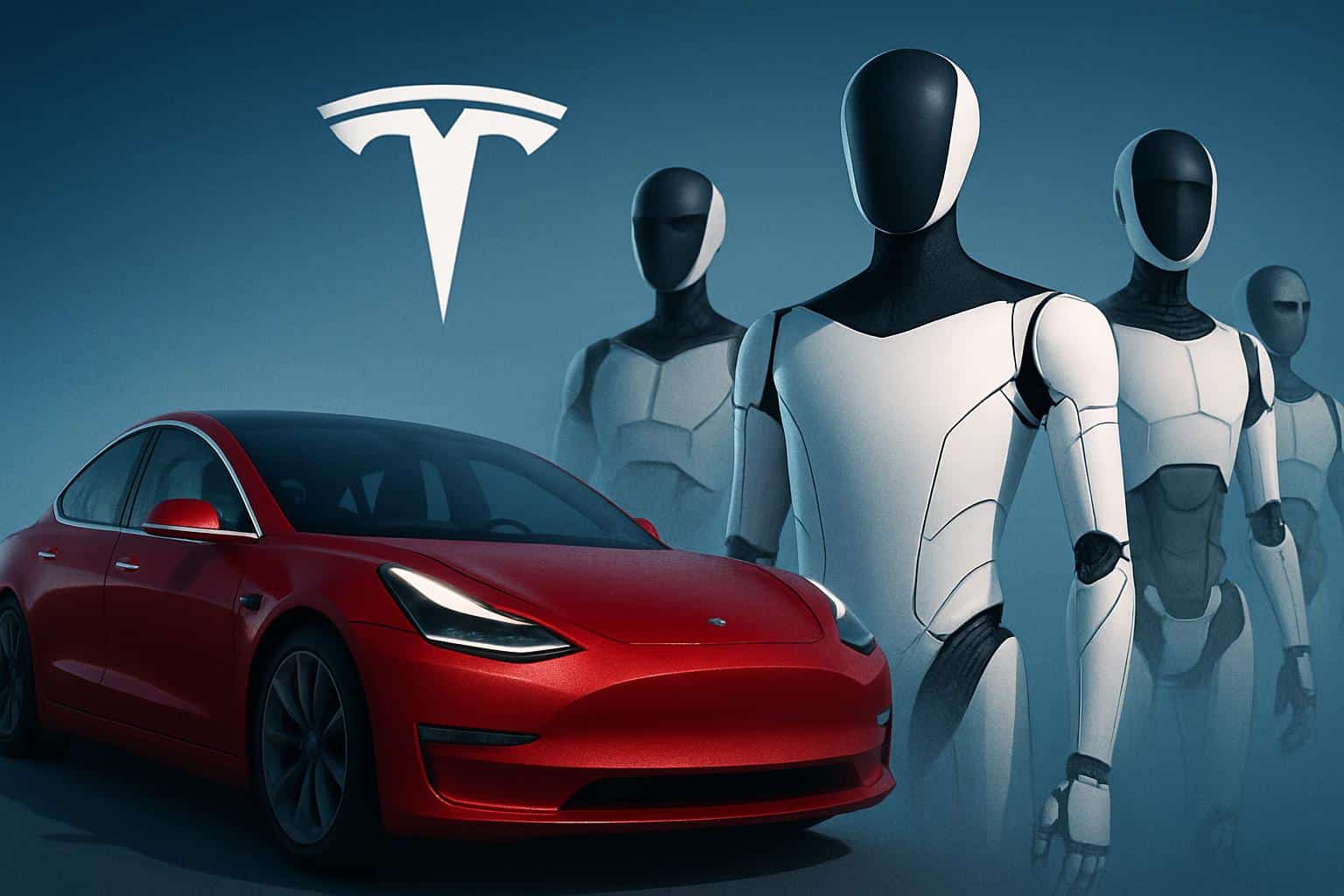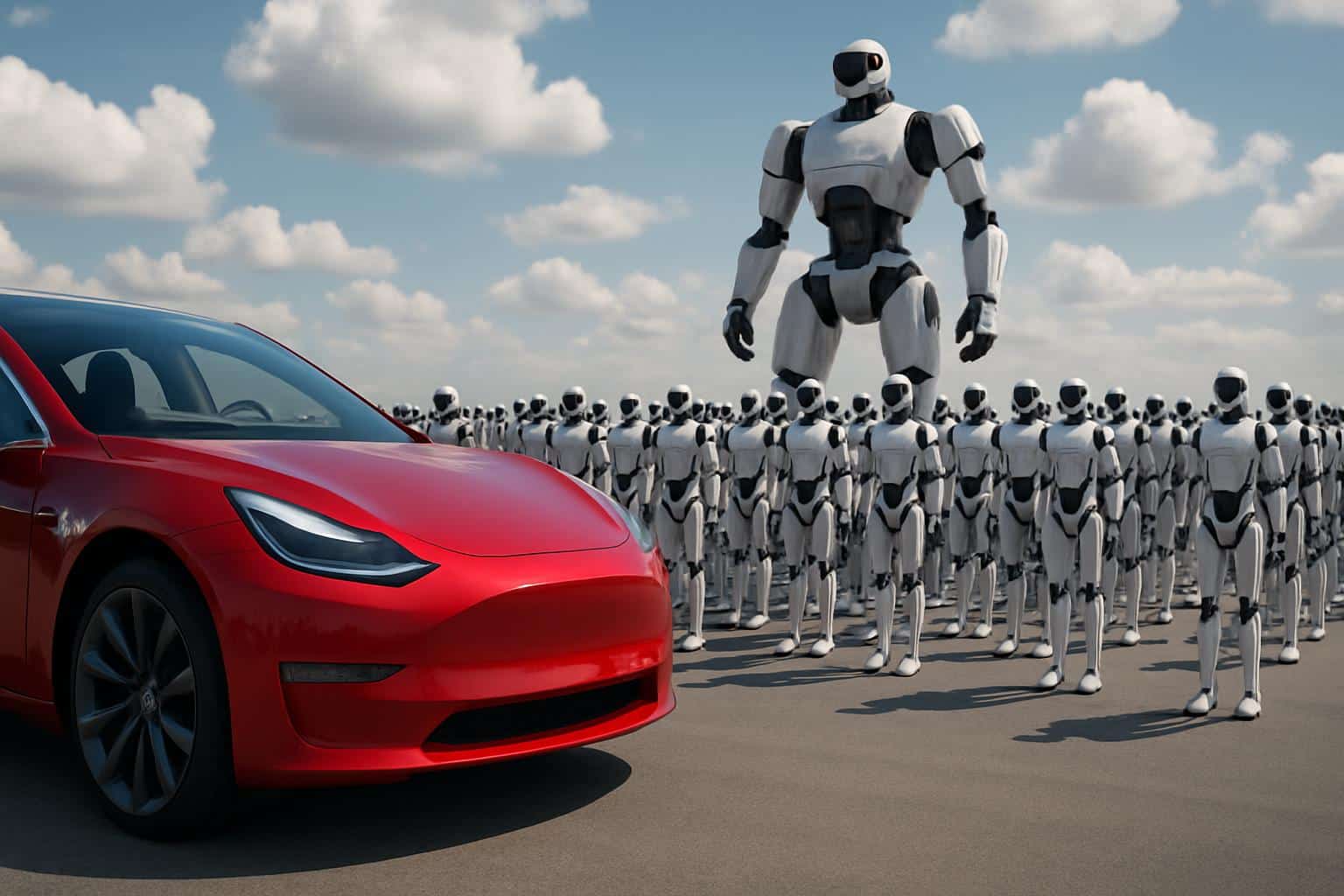Tesla just set another record for quarterly deliveries, but the slim rebound in its car business has been almost drowned out by Elon Musk’s obsession with driving an AI-powered future. Seeking to cement his control even as he pursues a “robot army” of driverless vehicles and humanoid robots, the CEO is under profit pressure as investors prepare to vote on an outsized equity package designed to solidify his authority over the company’s direction.
Record sales, but profits remain thinner than expected
Tesla delivered 497,099 vehicles in the third quarter, boosted by a flood of U.S. buyers using an expiring federal EV tax credit. Automotive revenue climbed to $21.2 billion, the strongest for the company in more than a year. But net income was only $1.4 billion, an increase from about $200 million in the previous quarter but still down 37 percent compared with a year earlier, according to the firm’s latest shareholder letter.

The company attributed the loss to a 50% year-over-year increase in operating expenses, due largely to AI and other R&D projects, as well as about $240 million in restructuring expenses. Tesla didn’t detail the charges, but they come as its Dojo supercomputer effort winds down — indicating a shift in how the company intends to secure the massive compute it needs for autonomy and robotics.
Tariffs added further strain. Chief financial officer Vaibhav Taneja said in an interview with investors that trade actions subtracted about $400 million from results for the quarter. Higher spending, policy headwinds and mixed pricing power kept margins tight despite a record in deliveries.
A robot army needs tighter control and clear governance
Musk made clear on the company’s recent earnings call that he believes Tesla is at an inflection point as it works to scale Full Self-Driving, introduce a purpose-built two-passenger “Cybercab,” and launch the Optimus humanoid robot for sale. He also signaled that he would like stronger voting control to execute that plan, telling investors that he values governance power more highly than cash. The board has suggested an outsized equity award for Musk — yet a package that, if it is deemed acceptable by shareholders, could balloon his sway given its reported trillion-dollar target value.
Proxy advisors have pushed back on that proposal. Institutional Shareholder Services and Glass Lewis have advised investors to vote against it on governance and pay-for-performance reasons, but past Tesla votes indicate strong retail shareholder backing. Musk has suggested he might step back if the package doesn’t work out, and he criticized the advisers on Monday’s call, pointing to how high-stakes the decision is for Tesla’s strategic path.

FSD, Robotaxi And Optimus Have Mountain To Climb
Musk has said Tesla is just getting started on its aggressive ramp up of autonomy and robotaxi services. Regulation and safety inspection make real-world implementation tricky. And already NHTSA, the federal regulators now investigating advanced driver-assistance crashes, and state agencies like the California DMV have proven they are capable of putting robotaxi operations on ice when public safety is ever in question, as happened with a rival service last year. Any Tesla robotaxi launch would have to show quantifiable safety benefits and fail-safe remote monitoring in order to win large-scale approvals.
Regarding robotics, Musk said Tesla could initiate construction on a third-generation Optimus as early as 2026. That’s a reset from previous timelines that had envisioned thousands of units much sooner. Reporting from The Information hinted at early production hiccups, and Musk himself conceded that it was no easy task even as he painted broad pictures for where the robot’s potential could lead — from simple factory tasks to more advanced jobs. Providing real utility within Tesla’s own manufacturing footprint will be the first test of credibility.
Management hinted that capital spending will ramp up dramatically in 2026 to support autonomy, robotaxi manufacturing and robotics projects. Taneja also pointed to increasing salaries associated with the industry’s AI talent war. Shuttering Dojo suggests Tesla may rely more on external compute or alter chip architectures, a decision that might accelerate development but raise operating costs vs. having the full stack in-house.
Auto industry recovery faces demand and margin concerns
Tesla will probably need another record quarter to equal its unit volumes of the last two years. New, more affordable versions of the Model 3 and Model Y that have been added recently could help, but the company is nowhere near the 50 percent annual growth path in deliveries that it once aimed for and used to communicate to shareholders. As that tax-credit tailwind wanes, investors will be looking to see if demand stays firm in the absence of further price actions and whether operational leverage can offset heavier investment around AI and robotics.
What to watch next for Tesla, AI, and robotics plans
The shareholder vote on Musk’s compensation will also be a horse race to see how much control he has over the “robot army” pivot.
- The trend for autonomy revenue will be set by how regulators react to FSD safety statistics and any pilot robotaxi programs.
- On the factory floor, proof that Optimus can safely do the same work as a human over and over again, at cost parity with human labor, would be a significant milestone.
- Just as critically, quarterly gross margins will have to stop dropping while capital spending rises.
- A tepid return to cars buys Tesla time, but AI and robotics execution now sets the company’s risk — and upside.

